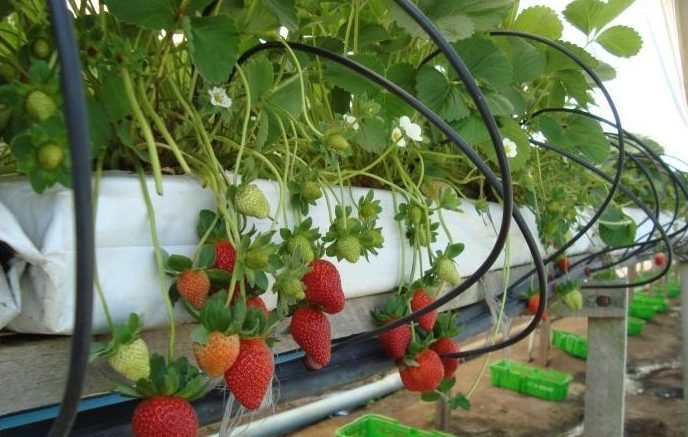“If all agronomic variables are not controlled, the use of an automated fertigation system can generate cost overruns…”
Gláucio da Cruz Genuncio is a professor at the Federal University of Mato Grosso – UFMT. Genuncio is an agronomist, MSc and PhD in soil science from the Federal Rural University of Rio de Janeiro.

Gláucio Genuncio, professor at UFMT
AgriBrasilis – What is the water potential of a soil and how can it be evaluated?
Gláucio Genuncio – The water potential is the sum of chemical components that defines how much water is “free”, or available, in the soil. This potential is divided into pressure potential, gravitational potential, osmotic potential and matric potential.
Saline soils, for example, have a greater influence of osmotic potential. The same occurs in nutrient solutions used for fertigation and hydroponics. The addition of fertilizers in certain concentrations, using products with a high saline index and low-quality water, with high concentrations of sodium (above 40 mg/L), carbonates and bicarbonates, in addition to Ca (Calcium) and Mg (Magnesium), are factors that can affect the osmotic potential of the nutrient solution. This can affect the growth of plants in early vegetative stages (seedlings), when those are farmed using the NFT system [Nutrient Film Technique], for example.
AgriBrasilis – How can automation be applied in hydroponic systems, fertigation, etc.?
Gláucio Genuncio – Automated irrigation can be used both in hydroponic systems and in fertigation.
To irrigate is to supply water to the plants. This can be done manually, by timing, by lysimeter, by estimating evapotranspiration, etc. It can also occur with the use of tensiometry (through calculations of the influence of each component of the water potential).
In Brazil, automated systems that use tensiometry are scarce, but the trend is for the use of these systems to increase, as it is the most appropriate form of automation in farming systems that use fertigation. Fertigation is the application of water along with fertilization, so the systems must be well dimensioned, so that there is homogeneity in the application.
Automation in hydroponics, mainly in NFT systems, is not based on the water application, as this is “cycled”. This automation is based on controlling intrinsic variables of the nutrient solution, such as pH and electrical conductivity. These variables are parameterized for each crop. The hydroponics automation system, by monitoring the variables, can alert the farmers of changes or make corrections.
Automation is the evolution that is missing for the advancement of Brazilian horticulture, especially if it is associated with the use of renewable power generation.
AgriBrasilis – What are the benefits of automated irrigation for horticulture?
Gláucio Genuncio – One of the benefits is saving water, for example. Water is what most restricts gains in production, productivity and quality of vegetables. Well-designed irrigation can be the main tool for efficient water use.
Automation reduces human error. The application of an essential factor for agricultural production (water) carried out with a reduction of operational errors, caused by humans, is the main justification for automation.
AgriBrasilis – How much does the implementation and maintenance of an automated irrigation system cost?
Gláucio Genuncio – Between US$ 6,176 and US$ 7,207 for each hectare, approximately. Maintenance is about 10% for the first three years of the system.
AgriBrasilis – What is the cost-effectiveness of this type of system? In what cases is it recommended?
Gláucio Genuncio – The irrigation system must be well designed, with self-compensating systems. The system should be seen as a tool for water and nutritional management of the crop. Investment is still needed in plant genetics, phytosanitary control, and specific cultural practices for each crop.
If all agronomic variables are not controlled, the use of an automated fertigation system can generate cost overruns. On the other hand, the benefits can be high if horticulture farming is done in a professional manner.
AgriBrasilis – In addition to humidity assessment devices, what other sensors are used?
Gláucio Genuncio – As for sensors, there are several examples: temperature sensors, PAR radiation, RH% %CO2, essential nutrient sensors (NO3, for example), wind, tensiometers, soil moisture meters, among others.
It should be noted that the interconnection of these sensors with a monitoring and correction automation center is the great challenge for the near future.
READ MORE:

